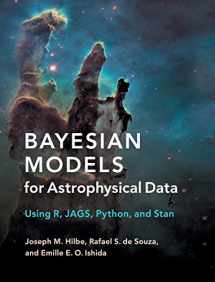
Bayesian Models for Astrophysical Data: Using R, JAGS, Python, and Stan
Book details
Summary
Description
This comprehensive guide to Bayesian methods in astronomy enables hands-on work by supplying complete R, JAGS, Python, and Stan code, to use directly or to adapt. It begins by examining the normal model from both frequentist and Bayesian perspectives and then progresses to a full range of Bayesian generalized linear and mixed or hierarchical models, as well as additional types of models such as ABC and INLA. The book provides code that is largely unavailable elsewhere and includes details on interpreting and evaluating Bayesian models. Initial discussions offer models in synthetic form so that readers can easily adapt them to their own data; later the models are applied to real astronomical data. The consistent focus is on hands-on modeling, analysis of data, and interpretations that address scientific questions. A must-have for astronomers, its concrete approach will also be attractive to researchers in the sciences more generally.


We would LOVE it if you could help us and other readers by reviewing the book
Book review



